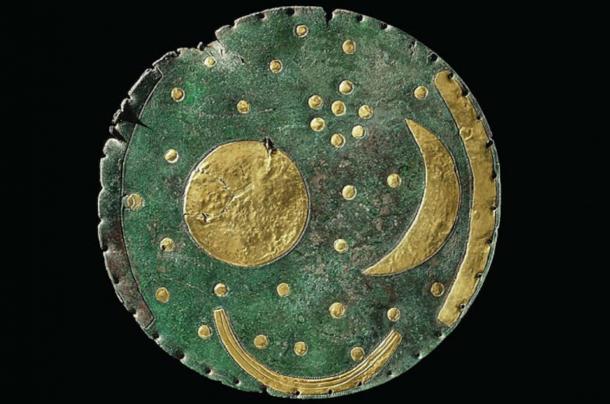Does laser hair removal hurt underarms
Laser hair removal is moderately torment free, notwithstanding how the underarm region may be a touch more delicate relying upon your degree of responsiveness.
Will I get bothersome underarms after laser hair removal
You may, yet that relies upon a couple of things like the amount you sweat, on the off chance that you are utilizing perfumed antiperspirants that disturb, or wearing tight engineered textures near the treatment region.
The best thing to do after your armpit laser hair removal treatment is let the skin of your underarm rest and fix. Certain individuals might feel a little bothersome after an armpit treatment, yet it means a lot to fight the temptation to scratch.
Since we raised sweat, many individuals have this inquiry: does laser hair removal underarms diminish sweat? Underarm laser hair removal can assist with decreasing perspiration; nonetheless, it doesn’t prevent sweat from framing.
How To Get ready For Laser Hair Removal Underarm
It isn’t so difficult to get ready for this kind of hair removal treatment, so don’t stress over it to an extreme.
Abstain from tanning or utilization of tanning creams before the arrangement
Shave the other day, particularly assuming that you are inclined to razor consume or rashes while shaving
Try not to wax or cull before laser treatment
Stay away from antiperspirants, creams, or salves in the treatment region
Wear a baggy top to try not to scrape the armpit region after treatment
Would it be advisable for me to shave my underarms before laser hair removal
Indeed, we in all actuality do suggest that you shave the day or night before your treatment. We encourage you to book an armpit laser hair removal counsel to get all the data about what to do when your hair removal meeting. We will be glad to talk about your modified laser hair removal underarms aftercare plan.
What number of Meetings Of Laser Hair Removal For Underarms? This is a brilliant inquiry, and there is a valid justification why it can take a few treatment meetings to completely eliminate all undesirable hair from a specific body part (e.g., armpits). For laser hair removal to find true success, the hairs being ‘destroyed’ by the laser should be in a phase of dynamic development (i.e., anagen period of development).
As every hair develops at an alternate rate, focusing on all the hair in the treatment region in one treatment session is unimaginable. For instance, some armpit hair may be in the dynamic development stage, while certain hairs will be in the resting stage.
What amount of time does laser hair removal require underarms? The treatment course of events will differ from one individual to another; on normal it will take around 6-8 laser medicines with about a month and an in the middle of between every meeting to consider every hair follicle to be designated in the right phase of the development cycle.
The motivation behind why laser hair removal can take a touch of time is that just 20% of your hair is in the dynamic development stage at one time. Just hair in the dynamic stage can be really designated by laser treatment. The uplifting news is you will be rebooked for additional laser hair removal medicines to catch the excess hairs as they enter their dynamic development cycle. contact best laser hair removal birmingham
How long does underarm laser hair removal endure? This treatment is compelling for north of a year or more, and we prescribe laser follow-up treatment to wipe out any wanderer or new hairs. Follow-up laser medicines are really smart to keep up with long haul results.
When you have your last armpit laser hair removal meeting, you will see a monstrous decrease in noticeable hair and hair development in the treatment region.
Who is Conservatory Roofing Right For
We exist since we realize that conservatory material can be better. Another rooftop is an incredible method for reviving a conservatory that is not satisfying its true capacity.
Notwithstanding, we understand that there are other conservatory material choices, and that a protected conservatory isn’t the most ideal decision for everybody.
You might be thinking about progress work on your home, whether that is a conservatory or expansion.
A Full Expansion
On the off chance that you have traditional conservatories with a glass or polycarbonate rooftop, we’re the experts who can supplant it with a Gatekeeper Warm Rooftop. The completed transformation feels very much like a full expansion after we add wall putting and, surprisingly, Drove spotlights whenever mentioned. You get the vibe and warmth of a genuine room however it stays a conservatory.
Regardless, there are the individuals who simply need a full expansion to the house rather than a conservatory rooftop transformation. We regard that decision and would have no desire to talk anybody into re-material their conservatory on the off chance that it’s not so much for them.
All things considered, we accept that everybody ought to be completely educated. So it’s critical to remember the hardships that an augmentation includes:
After full destruction of your ongoing conservatory to clear a path for the expansion, in addition to the full development obviously, you’ll be checking a strong cost out.
The additional time, assets, work and materials that go into a full expansion will presumably be reflected in your last bill.
Your current conservatory must be eliminated before another room can be implicit its place. Thumping it down is a tedious and muddled process, yet vital before the real development of the actual expansion can start.
Whenever destruction has been finished, the current base of your conservatory should be taken up, and new footings should be set up that are appropriate for an augmentation.
Something like three new walls will then must be fabricated where the conservatory walls stand now. Bricklaying, putting, window fitting, etc all take time.
In the mean time, you’re residing in your home and tolerating the sounds, sights and scents of destruction and development. That multitude of workers investing expanded energy in this full expansion cycle can be problematic to your day to day routines.
It merits bearing these interferences to you and your neighbors as a top priority while thinking about a full expansion. Contrasted and around 8 days that it takes to change a conservatory rooftop, you might be checking out at weeks or even a long time of building work.
More Intricate Structure Guidelines
Building guidelines can be overwhelming and complex. In straightforward terms, the greater your development project, the more obstacles you need to go through.
Watchman Warm Rooftops, for instance, come pre-endorsed by the LABC, making Building Guidelines application a breeze. Then again, full expansions should go through an extensive Structure Guidelines Endorsement process.
Notwithstanding, complying to appropriate structure guidelines is significant, as they are there to guarantee each home agrees with wellbeing and expressive principles.
Training Provider: The benefits of studying with Accountancy Learning
While picking a Aat accounting training supplier, it’s essential to do all necessary investigation and you ensure you go for a preparation supplier that meets your particular preparation needs.
For instance, you might be enticed to go with a preparation supplier whose courses are less expensive than every other person’s, yet does that mean you will get all the help you want? Or on the other hand, you might go with the most costly preparation supplier since you might think you are getting all the help conceivable, however is the assistance first class? for example is it safe to say that you are getting great incentive for your cash? The truth of the matter is, whichever preparing supplier you pick, you really want to ensure you understand what you are getting for your cash.
Around here at Bookkeeping Learning, we value being open, straightforward and fair. Here are only a couple of motivations behind why we figure you ought to think about considering with us:
TransparentIt’s truly critical that you know precisely exact thing you are paying for. We value giving legit exhortation, so in the event that you have an inquiry, we will give our all to respond to it as straightforwardly as possible. In the event that we aren’t 100 percent sure of the response, we will find out and afterward hit you up. We don’t conceal costs – you ought to have the option to find subtleties of the multitude of charges you want to be familiar with on our site; this incorporates a full breakdown of expenses, what’s remembered for the course and extra charges you should consider, (for example, AAT test charges and AAT enrollment expenses).
4.9* Service!We esteem our clients input, which is the reason we urge our understudies to leave us a legitimate survey. With north of 160 4* or more surveys on Google, you can see direct the amount we esteem our understudies and you’ll get a kind of the help we give. You can see our surveys here.
Assuming understudies furnish us with input that could be useful to us work on our administrations, we in all actuality do tune in and attempt our hardest to oblige – our understudies are our No.1 need and their criticism is priceless to us.
Various bundles to suit your needs!We grasp that “one cap doesn’t fit all”, for instance, having a mentor is the main way a few understudies can find the inspiration and backing they need to study, though for other people, being passed on to self-study with negligible help is the most favorable way for them to learn. One way or the other, we have various bundles to suit your requirements. These are:
Self-Concentrate EXTRA – No guide support, however all of the review materials you want as well as different advantages including our understudy Facebook Gathering
Mentor Upheld – All the review materials you want, yet in addition an individual coach to check your work and guide you through your examinations
Guide Upheld In addition to – equivalent to the Coach Upheld, with the exception of your expenses in general (counting AAT tests and enrollment), are paid forthright, so you don’t have to stress over some other expenses during your course. We have very high test pass rates so we are sure that you will breeze through your tests, in any case, on the off chance that you really do bomb a test (which we think profoundly far-fetched!) we will pay for your resit for nothing with the pass in addition to ensure (T&Cs apply).
You don’t simply get a course with us…
With Bookkeeping Learning, we believe you should succeed and guarantee that you get the best incentive for your cash. As referenced already, you can join the Bookkeeping Learning understudy bunch which implies you can visit with different understudies who are concentrating on very much like you! We like to consider ourselves a major family/local area, so we are close by to help each other through our investigations.
Installment plans
We realize that times are hard, so getting together a single amount of money can be a test… however don’t overreact, we offer revenue free installment intends to assist you with spreading the expense of your course, so you can in any case zero in on different things in life while as yet being able to put into your future.
There are a lot more advantages to considering with us, yet this article would turn out to be a paper! In this way, assuming you have any inquiries whatsoever about our AAT courses (or on the other hand on the off chance that you feel prepared to venture out with us), kindly reach out
Great Uses for Plastic Storage Boxes
At any point do you check out your home and fondle took care of with how much mess and things awkward? All things considered, you’re in good company. Studies have shown that our states of mind are really lifted by a tidier home as it assists us with feeling more loosened up in our environmental factors. Thus, it’s no big surprise we fondle took care of with pieces and pieces all over. Figuring out your house is no simple accomplishment, however there are a few simple speedy wins that will make certain to help.
Now is the ideal time to dismiss any fresh ideas.
We have concocted 8 ordinary purposes for plastic capacity boxes that will leave your home inclination new and coordinated quickly.
Heap of collapsed jumpers in fall tones laying on a white rack in a dull wood closet.
Out with the chilly, in with the meager few.
As the hotter weather conditions sets in and you can pretty much smell summer around the bend, now is the right time to store your woolies. Jumpers, sweatshirts and occasional sews occupy a great deal of room in our drawers and closets. Pressing massive garments like these far removed in plastic capacity boxes will fill your heart with joy to day life simpler. Also, who doesn’t adore pleasant clean drawers? Have a decent clear-out and let loose some space for your number one spring florals.
“Florals… for spring? Momentous.”
[Miranda Religious – Demon Wears Prada]
Top tips: Consistently ensure your garments are perfect and dry prior to taking care of them. Decide on profound plastic boxes when you are putting away clothing and pack things freely to keep up with reliable wind stream and forestall dampness develop. You can constantly pop in some desiccators, for example, silica gel parcels, just in case.
Red high obeyed shoes before a pile of clear plastic boxes loaded up with sets of shoes.
Try not to simply start your shoes off.
On the off chance that you’re in any way similar to me, you will have a lot of ‘periodic’ shoes topping off your shoe rack. We as a whole need something extravagant to wear to the following wedding or night out, yet you don’t need to store them generally together. Taking the shoes you wear once in a while and putting away them in little plastic stockpiling boxes opens up space as well as drags out the existence of your shoes. Keep them liberated from dust and out of danger so they put their best self forward for your next exposing. You can constantly place in a scented cabinet liner or little pack of blend with each pair, making your shoes smell new when you come to wear them.
Childs hand arranging plastic blocks into a reasonable plastic box.
It’s clean up time!
On the off chance that you have little ones, you will comprehend the ordinary skirmish of keeping their space clean. Yet, never dread, there is bounty we can do to assist with empowering a clean den. Youngsters love consistency, routine and association. Having a sort out of your kids’ toys feels like a drawn-out task at first, yet it takes care of over the long haul. Sort their toys into open plastic stockpiling boxes, making it simpler for them to know where to return things. Clear plastic boxes are ideally suited for this, so they can see what they are searching for – rather than purging each container to find their number one squirm toy.
Close up of plastic small stockpiling compartments loaded up with create shapes.
Be sly with your imagination.
Being inventive is great for our prosperity and is an extremely famous breathe easy. Imaginative exercises generally include an entire host of little parts, instruments and materials – all of which need a home. At times I wind up put off from partaking in my top picks creates right at the possibility of tracking down all that and cleaning it all away once more. Indeed, now is the right time to remove that pressure from the situation. Put resources into some appropriate plastic boxes, set aside some margin to track down boxes that suit your materials and instruments. When your number one imaginative exercises have been coordinated, you will find it more straightforward to convince yourself to get some down time and appreciate them.
Baking plate and cake tins on a wooden ledge with an open recipe book.
Prepare a-change.
Once more, here we are, another birthday is here and we really want to find the bakeware to make the birthday cake. Time to scavenge through the pantries and anticipate the unavoidable avalanche of baking plate. Indeed, we think the time has come to prepare your life more straightforward. Assemble all your speciality cookware that just gets utilized for exceptional recipes and pop it into a huge plastic stockpiling box. Regardless of whether the capacity take care of closures living in the cabinet notwithstanding, you will find it much less upsetting preparing for those last-minute heats. Furthermore, this will keep the plate from denoting within your kitchen pantries. Next time you want to prepare a bunch of bread rolls for the mid year fete or choose to give that souffle another go, it will be generally in a helpful spot.
Stacked up plastic food stockpiling holders with red covers, loaded up with different dried food varieties.
No really giving everything away.
While we are still in the kitchen, we should have a ponder food capacity. Rather than being disappointed the following time you track down three open boxes of cornflakes at the rear of the cabinet, give them a permanent spot to live with some plastic food stockpiling. Food capacity stays a famous family thing, in spite of the fact that we are hosting less gatherings about it nowadays. Most of our food cabinet staples show up at us in a kind of plastic sack or bundling. When opened, these sacks are difficult to reseal and wind up pouring out and making a wreck in the pantry. Plastic food holders are ideal for staying away from this, particularly for food sources like cereals, dried organic products, vegetables and grains.
Not exclusively will you have tidier pantries, however plastic food compartments have an extra advantage. In the event that you extravagant rolling out a little improvement to be somewhat more economical, have a go at tracking down your nearby zero waste shop. You essentially bring your own spotless holders, weigh out your food varieties and pay. This implies you have jumped out the pointless plastic bundling completely.
‘Hitler’s Deserters’ by Douglas Carl Peifer review
In 1989, as the Berlin Wall was about to fall, Turkish sculptor Mehmet Aksoy was completing his ‘Memorial for the Unknown Deserter’. Originally designed for Freedom Square in the West German capital Bonn it was placed, instead, at Unity Square in Potsdam, formerly in East Germany, in 2001. The sculpture, carved from Carrara marble, depicts an absence: in the centre of a large, rock-like formation is a human-figure-shaped hole outlining the space where a soldier might have stood. Douglas Carl Peifer’s work, Hitler’s Deserters, tells the story of men who similarly absented themselves from active duty in the German Wehrmacht during the Second World War. Since the precise number of those who committed this ‘crime’ cannot be known, Peifer’s focus is on those who were prosecuted for it. Military courts and tribunals sentenced an estimated 18-20,000 German soldiers, sailors, and airmen to death for desertion, ‘subversion of the military spirit’, and treason. Peifer recounts their possible motivations for evading military service and the paths taken to do so. It is a well-told tale, one that manages to humanise the victims of Nazi military justice and embed their individual narratives in a thorough examination of the world at war.
Peifer’s foremost contribution to the study of desertion in the Third Reich is bringing existing scholarship written in German to an English-speaking audience. This is the first comprehensive, academically rigorous English language account by a professional historian (a book with the same title was published in 2013 by a former conscript in the Swedish Air Force, but it was a popular history lacking references). Peifer has also carried out his own extensive research in the archives, making notable use of the Swiss Federal Archives in Bern, since neutral Switzerland was a key destination for many fleeing the Nazi war machine.
The book is well structured and accessible for the non-Wehrmacht-specialist, and readers not well versed in exactly what constituted Nazi-era military ‘justice’. Peifer outlines the military penal code and special wartime criminal laws that dictated how deserters were to be treated; the ideological obsession – shared between Wehrmacht officers and Hitler himself – with avoiding the spectre of an imagined ‘stab in the back’ (of the type allegedly suffered by Germany in 1918); and the contours of what Peifer calls a ‘politicized military leadership’ that propped up the Wehrmacht as a pillar of the Nazi state. The most poignant chapters, however, are those that humanise Hitler’s deserters by, in Peifer’s words, ‘putting a face to the numbers’.
These recount the experiences of eight men who dodged serving under the swastika. Among them is Wilhelm Hanow, who surrendered to authorities two and a half years after going missing from his unit, hidden by a brave wife who herself faced charges for aiding and abetting a deserter. Hanow was guillotined in May 1943. Ludwig Metz crossed the border into Switzerland, where he was questioned by the Swiss Military Intelligence Service, resulting in an unusually rich reconstruction of his path to, and motivations for, desertion. Stefan Hampel, born to a German mother and a Polish father, had contact with a Polish-Lithuanian resistance group while on the run from his unit. His sentence of 15 years of heavy labour was ‘little more than an extended death sentence’; incredibly he escaped from the labour camp only to be taken prisoner by the Soviets. Although, as Peifer rightly points out, there was no ‘typical deserter’, these short biographies highlight a factor that appears to have increased the likelihood of a death sentence in German military trials: the deserter’s supposedly ‘asocial personality’. Peifer thereby reveals just how inextricably intertwined military judicial ‘logic’ and Nazi ideological hatreds were.
The lengthy sections about why the vast majority of German soldiers continued to serve seem less necessary. Information about the ideological training provided by the Hitler Youth, contemporary notions of masculinity, and of comradeship are not entirely out of place, but this is well-trod terrain. Peifer might have been wiser to focus solely on who said no and why, rather than on the ongoing yeses. There are also some errors: Hitler was imprisoned at Landsberg not Landshut, President Paul von Hindenburg becomes Erich von Hindenburg and in some places is misspelled Hindenberg.
Despite this, Peifer deftly categorises the various motivations for desertion, emphasising that war weariness, fear, homesickness, and family issues topped the list, while moral reservations and political motives were much less frequent. Having these findings now available in English is a real service to scholarship on the Third Reich, and Peifer’s book goes further by examining the debates about the role of the deserter in postwar public memory in both Germanys. Maligned by many veterans as a traitor and a coward but later heralded as a hero and even a resister by peace activists, the German soldier who broke his oath to Hitler has been a polarising figure for decades.
That debate continues, playing out not only in academic publications and parliamentary debates but in public spaces. In 2009 in Cologne, a new ‘deserter memorial’ was unveiled, the Memorial for the Victims of NS Military Justice. Words made of metal form a shelter-like structure. They articulate a clear position on the controversial figure Peifer so skilfully depicts. They equate the deserter with a resister who ‘refused to shoot’, ‘refused to kill’, ‘refused to torture’, ‘refused to denounce’, ‘refused to brutalise’, ‘refused to discriminate’, and who ‘showed solidarity and civil courage when the majority remained silent and followed’. Whether the majority of Hitler’s deserters would have identified in this way is unlikely; most, when confronted by a brutal and eventually unwinnable war, simply chose to save themselves.
-
Hitler’s Deserters: Breaking Ranks with the Wehrmacht
Douglas Carl Peifer
Oxford University Press, 312pp, £26.99
Buy from bookshop.org (affiliate link)
Kristin Semmens is Associate Professor in History at the University of Victoria, Canada. Her latest book is Under the Swastika in Nazi Germany (Bloomsbury, 2023).
When And Why Was Yakuza, The Japanese Mafia Founded?
Conny Waters – AncientPages.com – The Yakuza is a mafia-like Japanese criminal organization that appeared during the Tokugawa Shogunate (1603 – 1868). It was formed by two separate groups of outcasts, the tekiya and the burakumin.
Tekiya And Burakumin Were Outcasts In Japanese Society
Many of the first yakuza members were the burakumin, who were a socioeconomic minority in Japan. Though the name burakumin literally means “people of the village,” these people lived in restricted neighborhoods that were ghettos. They were considered filthy individuals and poorly treated.
In 1603, a new law forced the burakumin out of the cities, and they lost all social rights. Referred to as non-humans, the burakumin found themselves below the four-tiered Japanese feudal social structure.
This is a preview of our premium article available only to members of Ancient Pages.
Become a member to read more – Click here
If you are already a member and have logged in to your account, you can access the article here
See also:
What Is The Meaning Of Ancient Hand Signs We Still Use Today?
Delatores – Who Were The Professional Gossip Collectors In Ancient Rome?
Facebook Censorship: Penalizing the Innocent and Still Missing the Harmful?
Once again Ancient Origins has been blocked by Facebook for posting content deemed not fit for general consumption. This is becoming an almost monthly occurrence, with the site being put on hold for the best part of a month each time. In fact, we are not even sure the self-censored image above will make it past the Facebook automated censorship system, but these days it seems we haven’t got much to lose. [Note: Yes, the image above did get us further restrictions]
Here are the latest problem images. Last month, Ancient Origins was put on hold for showing images from an Egyptian papyrus of the process of circumcision in Egypt – warning images of total nudity coming up…

Papyrus showing ancient Egyptian men undergoing circumcision. (archivohistoria/CC BY 4.0)
Even after appeal (where one would guess a human might be involved) this image does not pass Facebook community’s nudity or sexual activity rules:

So have Facebook got it right, and Ancient Origins have it wrong? Maybe we need to change our own moderation standards.
In the last week, the problem has been an article regarding a bog body which has the image below, flagged as breaking the community’s rules on violence. Warning, potentially disturbing image ahead.
My Daily Drop Pro Review
I’m a big fan of Daily Drop. It’s a points, miles, travel, and credit card newsletter created by my friends, Kara and Nate (they run a big YouTube channel of the same name). Daily Drop keeps you informed about the latest news and information around points & miles, as well as updates across the airline and hotel industries.
While the newsletter is free, they also have a subscription service called Daily Drop Pro, which promises even more points deals, alerts, and tools to help you find the award availability you need for your next trip.
But does it deliver? Is it worth the price?
As Daily Drop has gotten bigger, I’ve gotten questions about the service from readers so I figured it was time to breakdown the service and talk about who it is right for.
What is Daily Drop Pro?
According to the team at Daily Drop, Daily Drop Pro was created to be your one-stop shop for flights and hotels (whether with points or cash), deals, and chatting with like minded people in their community forum. The service has five main features:
- Flight Points Search
- Hotel Points Search
- Deal Alerts
- Wallets
- Daily Drop Pro Lounge
Let’s walk through all of them.
Flights Point Search

There are lots of websites that let you search for points flights. In addition to Daily Drop, there’s Point.me, Seats.aero, Points Path (a chrome browser extension), and a few others. The space has become incredibly crowded in the last few years.
What makes Daily Drop Pro Different?
The main feature that I really, really like is that you change your preferences to narrow the results based on time of day, stops, duration, maximum points, and aircraft type (which is a feature that is unique to them). They also have a feature that lets you compare the cash rate but that just sends you Google Flights and I don’t think that a real selling point. I think the real edge here is that you can get really specific on the award flights you want, which is something the other services lack.
Hotel Points Search
Daily Drop Pro also lets you search for award space for hotels. There’s not a lot of other competitors in this space and Daily Drop has a ton of options that let you customize your results based on points, programs, award certificates, which hotel programs you can transfer credit cards points, and so many more. I think the hotel award search is the best in class and, like the flight search, its ability to let you get hyper specific is really awesome.
Deal Alerts

This feature lists points and cash deals. It’s really cool because you can see not only award fare sales (which happen all the time but are a pain in the butt to keep track of) but also cash fare deals. You can select your home airports, choose your preferred travel regions, and let the deals decide your destinations.
Daily Drop Pro’s points deals are detailed, too — showing the taxes and fees of an award, which program to book through and how the redemption stacks up to Daily Drop’s point valuations. It’s one of the more comprehensive deal feeds out there.
Wallet & Points Management
The Wallet lets to link your different accounts (award programs and credit cards) and have them all displayed in one place. Plus, it will remind you of all the perks, credits, and other benefits you get with each card / loyalty program.
If you have a lot of different cards, this can be really helpful because it can be confusing to remember all the perk and deals that come with each card. Heck, even I forget sometimes and I’m expert at this stuff (but when you start to have double digit cards, it’s a lot to remember)!
The Daily Drop Pro Lounge
The lounge allows you to chat with other members. It’s a message board and like all message boards it didn’t seem that active. It’s a good feature but not one that I would rely on given that there’s not a lot of activity on the forum.
How much does Daily Drop Pro cost?
Daily Drop Pro Membership is $149 a year.
Is Daily Drop Pro worth it?
I think Daily Drop Pro is a good product if you have a lot of credit cards and are heavy into the points & miles game. Inputting all your cards and membership programs takes some initial start up time but the ability to track all your points, benefits, and rewards in one place is really convenient. As I said, even I forget about card benefits sometimes. It’s hard to keep multiple cards in your head so having it in one place is nice.
The hotel award feature is definitely the best in class. And, while there are other airline search tools, I do like the increased search filters (especially the ability to filter by plane type!).
And the deals feature can allow you to keep track of all the deals happening in one place rather than subscribe to multiple newsletters and websites.
So, is the service worth $12 a month? I think so. Daily Drop Pro essentially bundles lots of other programs, improves on them, and puts them all into one dashboard for you and that is a real time saver. I think the service is definitely worth it.
Book Your Trip: Logistical Tips and Tricks
Book Your Flight
Find a cheap flight by using Skyscanner. It’s my favorite search engine because it searches websites and airlines around the globe so you always know no stone is being left unturned.
Book Your Accommodation
You can book your hostel with Hostelworld. If you want to stay somewhere other than a hostel, use Booking.com as it consistently returns the cheapest rates for guesthouses and hotels.
Don’t Forget Travel Insurance
Travel insurance will protect you against illness, injury, theft, and cancellations. It’s comprehensive protection in case anything goes wrong. I never go on a trip without it as I’ve had to use it many times in the past. My favorite companies that offer the best service and value are:
Want to Travel for Free?
Travel credit cards allow you to earn points that can be redeemed for free flights and accommodation — all without any extra spending. Check out my guide to picking the right card and my current favorites to get started and see the latest best deals.
Need a Rental Car?
Discover Cars is a budget-friendly international car rental website. No matter where you’re headed, they’ll be able to find the best — and cheapest — rental for your trip!
Need Help Finding Activities for Your Trip?
Get Your Guide is a huge online marketplace where you can find cool walking tours, fun excursions, skip-the-line tickets, private guides, and more.
Ready to Book Your Trip?
Check out my resource page for the best companies to use when you travel. I list all the ones I use when I travel. They are the best in class and you can’t go wrong using them on your trip.
The Merovingians: ‘Do-Nothing Kings’?
The Merovingians: ‘Do-Nothing Kings’?
JamesHoare
Fri, 04/25/2025 – 09:26
Source link
How Did Homo Sapiens Survive The Magnetic North Pole Shift 41,000 Years Ago? Sunscreen, Clothes, And Caves Helped Them
Jan Bartek – AncientPages.com – Recent research indicates that ancient Homo sapiens may have gained significant advantages from the use of sunscreen, tailored clothing, and cave habitation during the period of magnetic North Pole shifts over Europe approximately 41,000 years ago.
These technological advancements likely offered protection against harmful solar radiation for Homo sapiens residing in Europe. Conversely, Neanderthals appear to have lacked such innovations and consequently vanished around 40,000 years ago.
This study, published in Science Advances and conducted by researchers from the University of Michigan’s Department of Anthropology and Michigan Engineering, reveals that during this era, the North Pole traversed Europe as part of a natural geomagnetic reversal process that has occurred approximately 180 times throughout Earth’s geological history. Although a complete magnetic reversal did not transpire at that time, a weakened magnetic field resulted in auroras visible across much of the globe. It increased exposure to harmful ultraviolet radiation from space.
Concurrently, evidence suggests that Homo sapiens began to produce tailored garments and utilize ochre—a mineral with sun-protective properties—more frequently on their skin. These adaptive behaviors may have facilitated their expansion throughout Europe and Asia during a period when Neanderthal populations were diminishing.
University of Michigan researcher Agnit Mukhopadhyay reconstructed what the magnetic field around Earth may have looked like during the Laschamps excursion, a time period between 42,200 and 41,500 years ago when the north and south poles wandered from their geographic locations. Image credit: Agnit Mukhopadhyay, University of Michigan
“In the study, we combined all of the regions where the magnetic field would not have been connected, allowing cosmic radiation, or any kind of energetic particles from the sun, to seep all the way in to the ground,” said Agnit Mukhopadhyay, lead author and U-M research affiliate in climate and space sciences and engineering ina press release.
“We found that many of those regions actually match pretty closely with early human activity from 41,000 years ago, specifically an increase in the use of caves and an increase in the use of prehistoric sunscreen.”
Wandering Poles
The generation of Earth’s magnetic field is attributed to the movement of molten metals within its outer core. These dynamic motions induce electric currents, which subsequently produce a magnetic field that envelops the planet in a protective halo. This halo serves as a shield against cosmic radiation, which can deplete Earth’s ozone layer and increase ultraviolet light exposure. Additionally, the interaction between these particles and Earth’s magnetic field results in the phenomenon known as aurora.
Mukhopadhyay initiated the development of models to study this interaction using the Space Weather Modeling Framework—a sophisticated numerical tool crafted and maintained by the University of Michigan’s Center for Space Environment Modeling—to examine solar, heliospheric, and planetary space environments, including that of Earth.
The sun persistently emits hot gases and charged particles toward Earth; due to their exceedingly high temperatures, they function as a plasma system. Mukhopadhyay devised a model predicting how this plasma system interacts with Earth’s magnetic field, ultimately influencing auroral formation.
This magnetic field is oriented with north and south poles—the North and South Poles—where it exhibits maximum strength. Consequently, auroras are typically observed at these polar regions. However, throughout history, these poles have occasionally deviated from their conventional geographic positions in events known as “geomagnetic excursions,” according to Mukhopadhyay. The most recent such event was the Laschamps excursion, which occurred approximately 41,000 years ago.
In collaboration with Sanja Panovska from Germany’s GFZ Helmholtz Centre for Geosciences, Mukhopadhyay constructed a three-dimensional reconstruction of Earth’s geospace system by integrating three distinct models: one global model reconstructing the geomagnetic field during the Laschamps excursion; another modeling Earth’s surrounding space plasma environment; and a third predicting Earth’s auroral appearance at that time. The resultant 3D model elucidated where charged particles could penetrate through Earth’s geomagnetic shield.
The researchers determined that during the Laschamps excursion, Earth’s magnetic field diminished to approximately 10% of its present strength. This significant reduction allowed the magnetic poles to shift closer to the equator, causing an expansion of the magnetic field lines. Consequently, auroras would have been visible across Europe and extending into northern Africa.
Subsequently, the researchers superimposed their three-dimensional model of Earth’s space system onto a global scale. They discovered that the Laschamps excursion period, spanning from approximately 41,000 to 39,000 BP, correlated with transformative periods for human populations residing on Earth at that time.
According to Raven Garvey, an associate professor of anthropology at the University of Michigan, Neanderthals and Homo sapiens cohabited in Europe. Homo sapiens, frequently referred to as anatomically modern humans, are believed to have arrived approximately 56,000 years ago. By around 40,000 years ago, Neanderthals were no longer recognized as a distinct species within Europe.
“What some of the differences are between these species, between Neanderthals and anatomically modern humans, that might account for that disappearance has been a major anthropological question for decades,” Garvey said.
During the Laschamps excursion, a time period between 42,200 and 41,500 years ago, the north and south poles wandered from their geographic locations. At this time, aurora, depicted here by gradients of green and yellow, were able to be seen over most of the globe. Image credit: Agnit Mukhopadhyay, University of Michigan
Associate Professor Garvey explained that clothing may have played a significant role in the development of anatomically modern humans. Archaeological evidence suggests that while Neanderthals did not necessarily possess the technological means to produce form-fitting garments, sites associated with anatomically modern humans reveal tools such as scrapers for hide production, as well as needles and awls indicative of sewing practices.
Tailored clothing offered considerable advantages: it provided enhanced warmth, enabling individuals to venture further from their shelters in search of sustenance. Additionally, tailored garments afforded protection against solar radiation, a factor with numerous adverse effects such as ocular pathologies and folate depletion, which can lead to birth defects and increased infant mortality. Thus, possessing protection against solar radiation would have conferred a substantial advantage.
Moreover, Homo sapiens may have intensified their use of ochre—a naturally occurring pigment composed of iron oxide, clay, and silica—utilized by various hominin species over time for painting objects and cave walls or even body decoration.
“There have been some experimental tests that show it has sunscreen-like properties. It’s a pretty effective sunscreen, and there are also ethnographic populations that have used it primarily for that purpose,” Garvey said. “Its increased production and its association primarily with anatomically modern humans (during the Laschamps) is also suggestive of people’s having used it for this purpose as well.”
Finding Caution In The (Solar) Wind
The researchers are careful to underscore that their findings aren’t definitive. However, they are a new way to look at already existing data.
“I think it’s important to note that these findings are correlational and (ours is a) meta analysis, if you will,” Garvey said. “But I think it is a fresh perspective on these data in light of the Laschamps excursion.”
In addition to examining how previous excursions might have affected humans long ago, Mukhopadhyay said the 3D model offers people a way to predict how excursions might affect us in the future.
“If such an event were to happen today, we would see a complete blackout in several different sectors,” he said. “Our communication satellites would not work. Many of our telecommunication arrays, which are on the ground, would be severely affected by the smallest of space weather events, not to mention the human impacts, which would also play a pretty massive role in our day-to-day lives.”
Mukhopadhyay further emphasized that their research underscores the ability of humans to survive on a planet with an atmosphere markedly different from our current one. This finding holds significant implications for the ongoing search for life on planets beyond Earth.
See also: More Archaeology News
“Many people say that a planet cannot sustain life without a strong magnetic field,” he said. “Looking at prehistoric Earth, and especially at events like this, helps us study exoplanetary physics from a very different vantage point. Life did exist back then. But it was a little bit different than it is today.”
Study co-authors also include Michael Liemohn, Daniel Welling and Austin Brenner of Michigan Engineering, Natalia Ganjushkina of both Michigan Engineering and the Finnish Meteorological Institute, Ilya Usoskin of the University of Oulu and Mikhail Balikhin of the University of Sheffield.
The study was published in the journal Science Advances
Written by Jan Bartek – AncientPages.com Staff Writer
Legendary Nebra Sky Disc Creation Method Has Been Discovered
A circle of corroded bronze, measuring 12 inches (30cm) across, adorned with golden shapes, was unwittingly discovered in 1999 in Nebra, Germany, now famously coined the Nebra Sky Disc. More than 3,600-years-old, it is widely considered to be the oldest known depiction of the cosmos. It is currently the subject of a new study, where metallurgical analysis has indicated that it was manufactured using a complex, hot-forging process, with ten cycles of heating up to 700°C!
- Bombshell Study Calls Astronomical Theories of the Nebra Sky Disk “Obsolete”
- Why a Replica of the 3,600-Year-Old Nebra Sky Disk Was Sent into Space

Hardly any suitable scientific method was omitted to study the Nebra hoard. (© State Office for Heritage Management and Archaeology Saxony-Anhalt)
An Elusive Manufacturing Process
Part of the UNESCO “Memory of the World” register since 2013, the Disc is considered one of the best-researched archaeological objects. The new study, published in the latest edition of the journal Scientific Reports, finally points us in the direction of the elusive manufacturing process.











